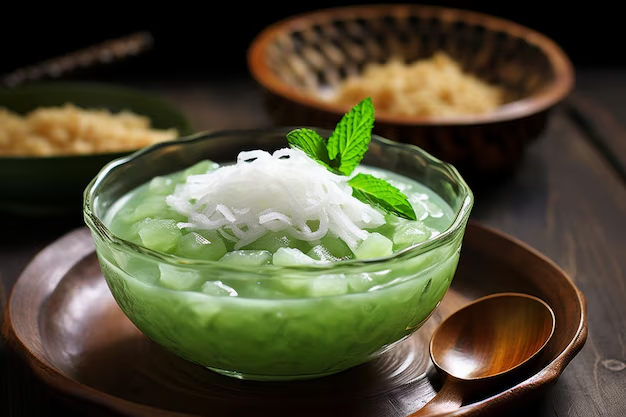preahvihearhotel.com – Es Cendol is a beloved Indonesian iced dessert that offers a delightful respite from the tropical heat. Known for its vibrant colors and sweet, refreshing taste, es cendol is a favorite treat among locals and visitors alike. This article explores the origins, ingredients, preparation, and cultural significance of this iconic dessert.
The Origins of Es Cendol
The history of es cendol can be traced back to Southeast Asia, with variations of this dessert found in countries like Indonesia, Malaysia, and Thailand. In Indonesia, es cendol is particularly popular in Java and Sumatra, where it is often enjoyed as a street food delight. The dessert’s name “cendol” is believed to have originated from the Javanese word “jendol,” referring to the sensation of the jelly-like pieces when they pass through the straw.
Ingredients and Components
Es cendol is a harmonious blend of textures and flavors, made from a few key ingredients:
- Cendol: The star of the dish, cendol are green, jelly-like strands made from rice flour and colored with pandan leaf extract. These strands have a chewy texture and a subtle pandan aroma.
- Coconut Milk: Rich and creamy, coconut milk is poured over the cendol, adding depth and a tropical flavor to the dessert.
- Palm Sugar Syrup: A sweet syrup made from palm sugar is drizzled over the top, providing a rich, caramel-like sweetness that complements the other ingredients.
- Shaved Ice: A generous serving of shaved ice is added to keep the dessert cool and refreshing.
- Additional Toppings: Some variations of es cendol include toppings like red beans, jackfruit, or sweet corn, enhancing the flavor and texture profile.
Preparing Es Cendol
Making es cendol at home is a fun and rewarding experience. Here’s a simple guide to creating this refreshing dessert:
- Making the Cendol: Mix rice flour with pandan leaf extract and water, then cook until the mixture thickens. Pour the mixture through a cendol mold or a sieve into a bowl of cold water to form the strands.
- Preparing the Syrup: Melt palm sugar with a little water until it forms a thick syrup. Allow it to cool.
- Assembling the Dessert: In a glass, layer the cendol strands, shaved ice, and coconut milk. Drizzle the palm sugar syrup over the top.
- Serving: Serve immediately, allowing the flavors to meld as the ice melts, creating a refreshing and sweet treat.
Cultural Significance
Es cendol is more than just a dessert; it is a reflection of Indonesian culture and hospitality. It’s often enjoyed during festive occasions and family gatherings, symbolizing the joy and togetherness of shared moments. Street vendors selling es cendol are a common sight in bustling markets, offering a quick and satisfying treat for anyone in need of a sweet escape.
Conclusion
Es cendol is a testament to the creativity and diversity of Indonesian cuisine. Its combination of flavors and textures provides a unique and refreshing experience that captures the essence of tropical indulgence. Whether enjoyed on a hot afternoon or as a dessert to conclude a meal, es cendol remains a cherished part of Indonesia’s culinary heritage, inviting everyone to savor the sweetness of life.
